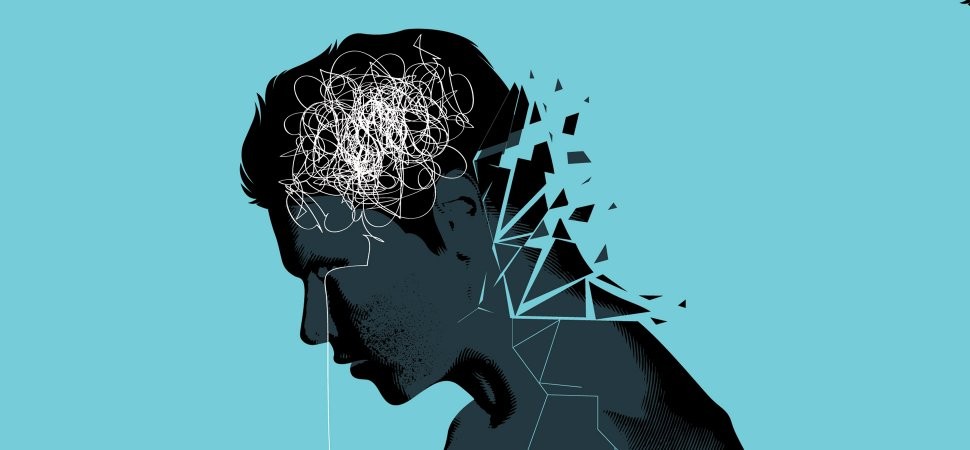
2: Masking, Meltdowns, and Shutdowns – What Anxiety ReallyLooks Like
😶 Anxiety Isn’t Always Out Loud For many neurodivergent adults, anxiety doesn’t look like panic—it looks like: - Appearing calm while internally screaming (masking) - Total emotional overwhelm (meltdown) - Going completely blank or non-verbal (shutdown) 🌀 The Pressure to “Keep It Together” Many of us have spent years learning to mask. But just because you’re functioning on the outside doesn’t mean you’re okay. Masking is exhausting. It’s also one of the biggest contributors to chronic anxiety and burnout. 🔥 Meltdown & Shutdown Aren’t Behavioural Issues They’re survival responses. When you reach cognitive overload, your body and brain shut down as protection. 🧘♀️ Key Support Strategy Learn your early warning signs. Build in recovery time. And create environments where you don’t have to perform all the time.

1: Anxiety in the Neurodivergent(ND) Brain – It’s Not JustWorry
🔍 Let’s Start With This: You’re Not “Overreacting” If you’re neurodivergent (ADHD, autistic, or otherwise), you’ve likely heard it all before: - “You’re too sensitive.” - “You’re always overthinking.” - “Just calm down.” But here’s the truth: you’re not broken. You’re processing differently. Anxiety in neurodivergent adults doesn’t always follow the same path as in neurotypical ones. It’s not “just worry” or “irrational thoughts”—it’s often sensory overload, task overwhelm, social exhaustion, or executive dysfunction disguised as panic. 🧠 Neurodivergent Brains, Different Wiring When we talk about anxiety in ND adults, we’re often talking about: - Overwhelm from environments that weren’t built with us in mind - Burnout from years of masking or pushing through - Rejection sensitivity that makes every interaction feel like a risk - A nervous system that never quite switches off This is not anxiety in isolation—it’s anxiety as a result of constantly navigating a world that expects you to

3.From Awareness to Action – How to Interrupt the Anxiety Cycle
In the last blog, we explored the importance of becoming consciously aware of how anxiety shows up in your body, mind, and behaviour. You learned that anxiety isn’t your enemy—it’s a signal. And when you start to notice those signals without judgement, you begin to reclaim power over your responses. But what comes next? Now that you can see the anxiety response as it unfolds, what do you do with it? In this post, we’ll look at how to interrupt the anxiety cycle—in small, achievable steps—and start teaching your body and brain a new, calmer way of being. 🛑 First, Let’s Name the Problem Here’s what many people do with anxiety (no shame if this sounds familiar): Try to distract or avoid it Overthink it until they spiral Pretend they’re fine Criticise themselves for not “coping better” And all of that just reinforces the idea that anxiety is dangerous or shameful. But here’s a truth you may not have heard before: You don’t need to feel calm to take calming action. You can feel anxious and

2.Meeting Your Anxiety With Curiosity, Not Criticism
In our last post, we began unpacking what anxiety really is—not something to be cured, but something to be understood and worked with. We talked about the natural survival response, the role of fear, and how quickly the body reacts without our conscious awareness. Now, let’s take a step further. Because before we can change anything—before we can regain a sense of control—we need to become consciously aware of how anxiety shows up in us. 🧠 Why Awareness Is the First Step to Change If you’ve lived with anxiety for a while, it may feel like it runs the show. One minute you’re fine, the next minute your heart is pounding, your thoughts are racing, and you’ve convinced yourself something terrible is going to happen. That’s not weakness—that’s your nervous system doing what it’s been trained to do. But here's the good news: you can retrain it. And it starts by observing, not reacting. 🔍 Becoming the Observer: Noticing Without Judgement Most of us respond to anxiety by either: Trying to pu

1.Becoming consciously aware of our stress and anxiety behaviour responses
I don’t profess to get rid of your anxiety, or give you a cure. The fact is that we need worries, fears, and anxieties to survive. But what we need to do is make our anxieties work for us, stop making anxiety our enemy. Instead, develop skills to win most of the battles so you control your war with your mind. I hear some of you say , “oh here is another person telling me I can have control” ‘Do you not think I’ve tried, nothing works. Let’s just face it it’s the way my life is.” “She has probably never experienced anxiety” Well all of these I’ve heard. Worries, fear and anxieties are not not meant to be physically or mentally damaging. Humans have developed and evolved to have anxious episodes to survive and our minds have also developed the capacity to recover from them. We need anxiety to survive. So I’m going to start at the beginning, some of you maybe further down line in terms of your knowledge and understanding, some may not have heard or read this before. So join us when I get